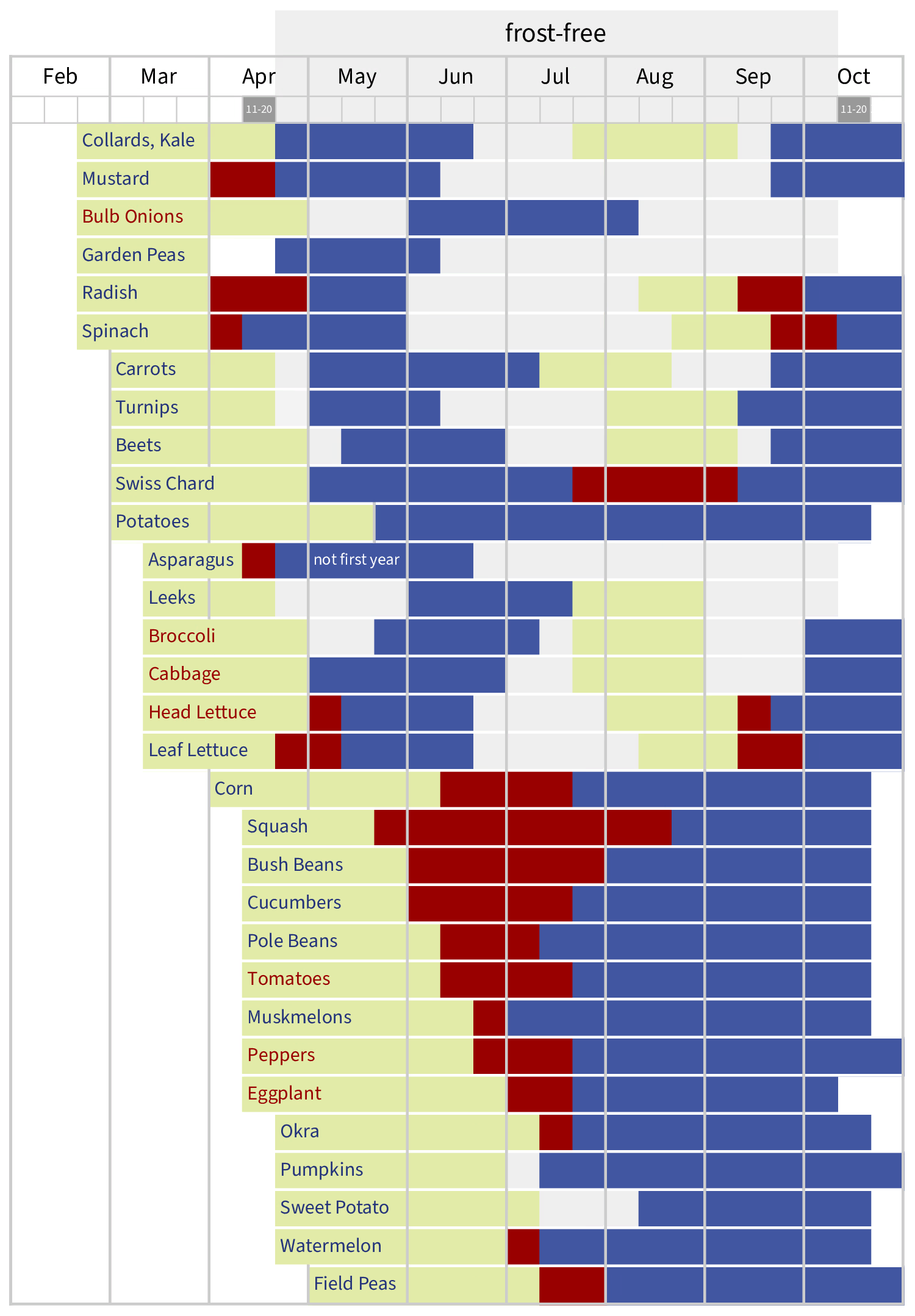3–4 minute read
Vegetables & Herbs
Planning
Draw up a layout for your vegetable garden keeping the sun’s pattern in mind. If the ground is flat, run rows north-south. Regardless, place taller plants on the north end so that they don’t shade out shorter ones (lettuces and other leafy greens may appreciate some afternoon shade). See Vegetables / Prep for detailed instructions.
Consider potential soil contaminants in the area chosen for your garden, as well as for additions like compost and manure. Composted municipal yard waste often contains heavy metals and other contaminants and recently, herbicide carryover in compost, manure and some materials commonly used to mulch vegetable gardens has become a problem.
- Minimizing Risks of Soil Contaminants in Urban Gardens
- Herbicide Carryover in Hay, Manure, Compost, and Grass Clippings
- Certified Compost
Planting
Growing Small Farms list of recommended vegetable varieties
- Plant hardier vegetables like beets, radishes, turnips, leafy greens, carrots, broccoli, cabbage, cauliflower, potatoes, and asparagus in early April, but wait until the end of the month to plant tomatoes, peppers and eggplants.
- Start seeds of hot-season crops like corn, beans, melons, cucumbers and summer squash after the frost date, April 15.
Vegetable Calendar
The chart below uses 10-day intervals based on our Orange County frost dates. We use conservative frost date ranges of April 11–20 and October 11–20, meaning that there is only a ten percent chance of a later spring frost or earlier fall frost. Planting in the middle of a vegetable’s date range is the most reliable choice.

Fruits
Pruning
There is still time to prune blueberries, blackberries, grapes, and fruit trees:
- Remove old blueberry canes at the base. Prune vigorous shoots to 4–5 feet to promote branching and to ease harvesting. Small basal shoots can be removed (and transplanted if desired).
- Cut side shoots of blackberries back to 12–14 inches to keep the fruit close to the strong main stem. Remove any remaining dead or weak canes and all sucker shoots farther than ~12 inches from the crown.
- Fruit trees should be pruned yearly. The goal is to develop a structure with well-spaced branches (to reduce the likelihood of disease and to ease harvesting) that all have good exposure to sunlight (to maximize fruiting). While pruning is usually done earlier in the season, trees will tolerate pruning up until growth initiates from buds.
Frosts · Freezes
Species like peaches and blueberries with low chill requirements (the number of hours when the temperature is 32–45°F) are susceptible to spring frost because once the chill requirement has been satisfied, a short spell of warm weather induces buds to swell and open. The extent of cold damage depends on the stage of bud formation, but a good fruit crop may still occur — most fruits need some thinning, and some fruit trees have latent buds that will swell and blossom if other buds have been frozen.
To delay bud break during a warm spell, use a sprinkler to mist your tree during the day. Misting can reduce daytime temperature by 10–15°F. The heat required to evaporate the water is taken from the bud, which prevents the hormonal changes that initiate bud development.
Dormancy and how to maintain it
AgroClimate Chill Hours Calculator
disease & insects
- Spray all fruit trees with dormant oil to help eliminate some insects.
- Monitor for fire blight on fruit trees from the rose family (apples, crabapples, pears). When choosing trees to plant, select genetically resistant varieties.
- Once fruit trees have finished blooming, use preventive strategies to minimize insect and disease problems.
